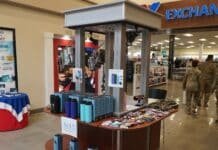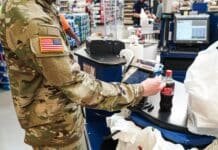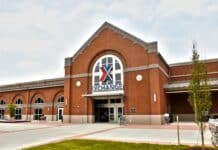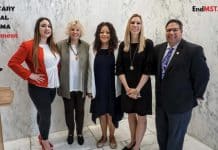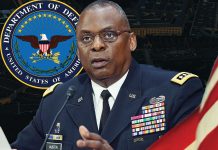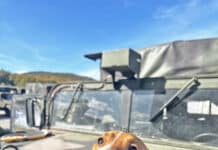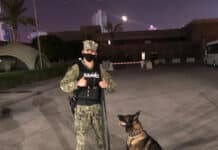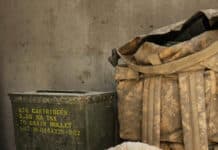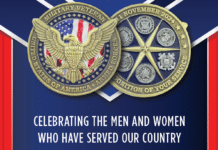Peel back the layers and the glamorous resumes and this roomful of genteel men (and a few women) reveals a shadowy reformist element once dubbed the “Fighter Mafia” and what one founding member has called a “conspiracy” of “bureaucratic guerilla warriors.”
by Kelley Beaucar Vlahos
An informal group begun by Col. John Boyd and mathematician Tom Christie calls for military reform—by doing more with less.

At a glance it seems like any other fraternal convocation in Washington—dazzling credentials, even more impressive name-dropping. These military sages have been meeting weekly for four decades to talk shop, and on this night of nights their camaraderie is expressed in so many anecdotes, many of which date back to the Johnson and Nixon administrations.
Wednesday nights at the round tables in the Officers Club at Fort Myer: beer, wine, and exhaustive talk about fighter aircraft, weapons systems, combat vehicles, ships, politics, and the Pentagon budgetary labyrinth—what more could a klatch of the defense world’s best and brightest want in their downtime?
“Typically, there’d be ten to fifteen people for a couple of hours, lots of beer,” says Norman Polmar, advisor to three U.S. Navy secretaries, who has been coming to the group for some 20 years. He was on point to offer newcomers a semi-official history at the gathering’s 40th anniversary meeting on Wednesday night. “We sit at a couple of tables and discuss military issues—I’d guess half the people here are active [military and Defense Department employees], the other half retired. They bring the perspective of people who are making day-to-day decisions at the Pentagon.”
But this is much more than a social hour for flyboys and engineers, test pilots and whiz kids—though all are represented here. Peel back the layers and the glamorous resumes and this roomful of genteel men (and a few women) reveals a shadowy reformist element once dubbed the “Fighter Mafia” and what one founding member has called a “conspiracy” of “bureaucratic guerilla warriors.” Why else would a writer like Andrew Cockburn—author of Rumsfeld: His Rise, Fall, and Catastrophic Legacy—be wandering about, mixing it up with Pentagon critic Winslow Wheeler, and Danielle Brian, head of the Project on Government Oversight (POGO)?
This group is not radical in the obvious sense, but they’ve been doing battle within the system (and despite it), members say. They are committed to reforming the defense industry, not tearing it down. They’ve occupied coveted positions at the top and have advised cabinet members, service chiefs, and members of Congress. They have brought ingenuity and better technology to flagging systems and fought like back-alley bullies to get their reforms through.
“I don’t know anywhere else to go to find a group more dedicated to making things better,” says Charles “Chuck” Myers, who flew B-25 missions against Japanese shipping in World War II and later became a fabled test pilot—setting a new World Speed Record of 1544 mph with the F-106 in 1959—and eventually the Pentagon’s director for air warfare. In that role, he was able—with the help of “the group”—to push successfully for the lightweight fighter program that incorporated the F-15, F-16, and later F-18 planes into the fleet during the 1960s and 1970s.
Together, the men at this gathering have also been credited with advancing close air support (CAS), including the design and introduction of the A-10 “Warthog” into the Air Force. Today, members debate and rail against the V-22 “Osprey” tilt-rotor, F-35 fighter, and the Navy’s Littoral Combat Ship (LCS). As they have from the beginning, when they pushed against the extravagances loading down Vietnam War-era planes, they continue to believe more can be done with less—and that includes in the federal defense budget. They are a bureaucratic anomaly in Washington.
“Most of us spent a year in Vietnam,” says Mike Burski, a former Air Force pilot who flew A-10s and has been coming to the group for a couple of decades. Here, he says, “it was always possible to talk about things that could not be talked about anywhere else.”
To understand the group is to go back to its origins. Founding member John Boyd, military strategist and “guru,” is best known for developing the OODA (observe, orient, decide, act) Loop concept, which when applied correctly gives a pilot advantage over an adversary in combat operations. Boyd passed away from cancer in 1997, but he was ever present in spirit at Wednesday night’s event.
“Brilliant stuff,” says group attendee Benjamin Works, also an Air Force veteran, referring to Boyd’s strategy lectures.
Boyd and co-founder Tom Christie, a mathematician who worked for the Air Force as a ballistics analyst, met during their time at Eglin Air Force Base in Florida during the Vietnam War. They hit it off and quietly pursued what is known now as the Energy Maneuverability theory, or “EM,” as a new test of aircraft performance. According to lore, Boyd and Christie—who was on hand Wednesday evening as humble master of ceremonies—would “steal” time on Air Force computers to develop their theory, which today is standard doctrine.
Boyd and Christie started the group on a very small scale in Florida, fueled more by beer and frivolity than anything else. Things got serious when Boyd and later Christie were brought to work at the Pentagon. They met Pierre Sprey, a self-described “subversive” in the Office of the Secretary of Defense, then occupied by Robert McNamara. Sprey was one of the “whiz kids,” but he believed the Air Force was doing everything wrong in Vietnam. He was an early proponent of close air support, which led to the development of the A-10 Thunderbolt II “Warthog.”
“We were bureaucratic guerrilla warriors, fighting the system and deploying whatever underground means we could use,” including whistleblowing, leaking, and “suborning” members of Congress, Sprey says, half-joking.
“John Boyd came in as a maverick,” Sprey recalled. Initially, Boyd was brought to the Pentagon in the 1960s by a general who disliked Sprey’s ideas on close air support and was pulling together a group of eggheads to “disgrace” him. When the general left Boyd alone in the room with Sprey they “became fast friends, co-conspirators.” The rest is history.
By the time the group held its first Washington meeting in 1973, Sprey, Boyd, Christie, and test pilot Col. Everest Riccioni had designed the concept that was directly implemented as the F-15 and F-16 fighter programs—which have served as the core of American air power for the past 40 years. The group came to be known as the “Fighter Mafia” and expanded their circle to include other like-minded individuals with the same goals for reforming programs and building better weapons systems for the military.
“I’m proud of what we achieved, but it was only a drop in the bucket” relative to the massive size of the Pentagon’s budget and operations, says Sprey. “At least we got a few things done.”
Today, he adds, “we’re a network of subversives trying to cut the defense budget and campaigning against things that don’t work.”
Christie and Polmar note that the meetings, far from being frozen in amber, are still attracting active-duty military and civilians in the Pentagon workforce who are eager to get down to a granular level on specific programs and policies and want a forum for unconventional ideas.
As if to prove that the 40th anniversary celebration was as much to pass the baton to a younger generation as to acknowledge the past, two young Navy acolytes of John Boyd’s theories turned out for their first meeting on Wednesday. They told TAC they had just read one of the many books written about Boyd and were hoping to find guidance in the group. They would not, however, give their names.
“They wouldn’t want to do that,” Christie says, winking. “We made a lot of things happen,” he had noted earlier, when all gathered for a few moments alongside the round tables, now scattered with beer and wine bottles and plates of appetizers. “You young guys, you can make things happen. But you got to do it under the radar.”
Source : The American Conservative
Kelley Beaucar Vlahos is a Washington, D.C.-based freelance reporter and TAC contributing editor.
All content herein is owned by author exclusively. Expressed opinions are NOT necessarily the views of VNR, authors, affiliates, advertisers, sponsors, partners, technicians, or VT Network. Some content may be satirical in nature.
All images within are full responsibility of the author and NOT VNR.
Read Full Policy Notice - Comment Policy



